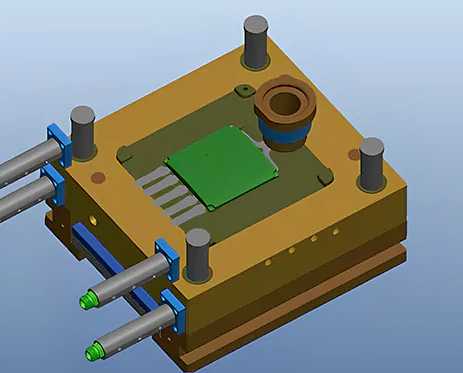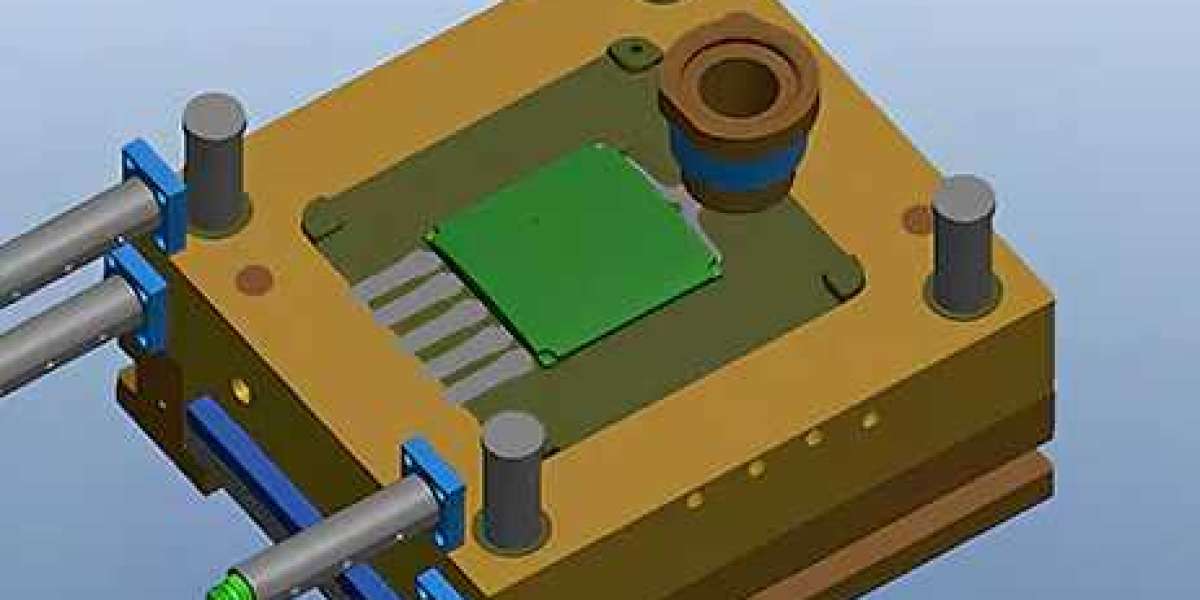In the world of manufacturing, die casting stands out as a versatile and efficient process for producing complex metal parts with high precision and repeatability. At the heart of this process lies the die casting mold, a crucial component that shapes molten metal into desired forms. The selection of the right material for these molds is a critical decision that impacts not only the quality of the final product but also the overall efficiency and cost-effectiveness of the manufacturing process.
This comprehensive guide delves into the intricacies of selecting the optimal materials for die casting molds, with a specific focus on aluminum and zinc casting applications. We'll explore the various factors that influence material selection, the characteristics of different mold materials, and provide insights into making informed decisions for your die casting projects.

Understanding Die Casting Mold Requirements
Before diving into specific material choices, it's essential to understand the demanding conditions that die casting molds must withstand:
- High temperatures: Molds are exposed to molten metal, which can reach temperatures of 600°C to 700°C for aluminum and 400°C to 450°C for zinc.
- Thermal shock: Rapid heating and cooling cycles create significant thermal stress on the mold material.
- Mechanical stress: High injection pressures and clamping forces exert considerable mechanical stress on the mold.
- Wear resistance: Molds must withstand abrasion from the flow of molten metal and ejection of solidified parts.
- Dimensional stability: The mold material should maintain its shape and dimensions under repeated use and thermal cycling.
Key Factors in Die Casting Mold Material Selection
When choosing a material for die casting mold making, several factors must be considered:
- Thermal properties: Heat capacity, thermal conductivity, and thermal expansion coefficient.
- Mechanical properties: Tensile strength, yield strength, and hardness.
- Wear resistance: Ability to withstand abrasion and erosion from molten metal flow.
- Machinability: Ease of manufacturing complex mold geometries.
- Cost: Initial material cost and long-term durability considerations.
- Production volume: Expected number of castings to be produced from the mold.
Common Die Casting Mold Materials
Several materials are commonly used for die casting molds, each with its own set of advantages and limitations:
1. H13 Tool Steel
H13 tool steel is one of the most widely used materials for die casting molds, particularly for aluminum casting. Its characteristics include:
- Excellent hot hardness and tempering resistance
- Good thermal shock resistance
- High wear resistance
- Suitable for large production runs
2. H11 Tool Steel
H11 tool steel is another popular choice, offering:
- Good balance of hot strength and toughness
- Excellent resistance to thermal fatigue
- Lower cost compared to H13
- Suitable for medium to large production runs
3. P20 Pre-hardened Steel
P20 pre-hardened steel is often used for prototype molds or low-volume production, offering:
- Good machinability
- No heat treatment required
- Lower cost compared to H13 and H11
- Suitable for zinc die casting and low-volume aluminum casting
4. Maraging Steel
Maraging steel is a high-performance option for demanding applications:
- Exceptional strength and toughness
- Excellent thermal fatigue resistance
- Good dimensional stability
- Suitable for high-stress areas in complex molds
Material Selection for Aluminum Die Casting
Aluminum die casting presents unique challenges due to its high melting point and tendency to cause soldering on mold surfaces. When selecting materials for aluminum die casting molds, consider the following:
| Material | Advantages | Considerations |
|---|---|---|
| H13 Tool Steel |
|
|
| H11 Tool Steel |
|
|
| Maraging Steel |
|
|
For most aluminum die casting applications, H13 tool steel remains the preferred choice due to its excellent balance of properties and proven track record. However, for extremely complex molds or high-stress areas, maraging steel inserts may be used in conjunction with H13 to enhance performance and longevity.
Material Selection for Zinc Die Casting
Zinc die casting typically operates at lower temperatures compared to aluminum, which allows for a broader range of mold material options. Consider the following when selecting materials for zinc die casting molds:
| Material | Advantages | Considerations |
|---|---|---|
| P20 Pre-hardened Steel |
|
|
| H13 Tool Steel |
|
|
| QC-10 Aluminum |
|
|
For zinc die casting, P20 pre-hardened steel is often the go-to choice for its balance of properties and cost-effectiveness. However, for high-volume production or parts with tight tolerances, H13 tool steel may be preferred. QC-10 aluminum molds can be an excellent option for prototyping or low-volume runs, offering faster cycle times and lower tooling costs.
Advanced Considerations in Mold Material Selection
Beyond the basic material properties, several advanced considerations can influence the choice of die casting mold materials:
1. Surface Treatments and Coatings
Various surface treatments and coatings can enhance the performance of die casting molds:
- Nitriding: Improves surface hardness and wear resistance
- PVD coatings: Enhances thermal barrier properties and reduces soldering
- Laser hardening: Selectively hardens high-wear areas of the mold
2. Hybrid Mold Designs
Combining different materials in a single mold can optimize performance and cost-effectiveness:
- Using high-performance inserts in critical areas of the mold
- Incorporating cooling channels made from high thermal conductivity materials
- Utilizing sacrificial inserts in high-wear areas for easy replacement
3. Additive Manufacturing Techniques
Emerging additive manufacturing technologies offer new possibilities for die casting mold production:
- 3D printed conformal cooling channels for improved thermal management
- Hybrid molds








